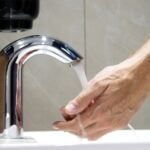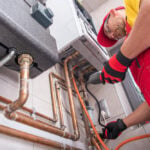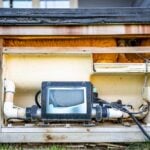
Preventing Water Damage with Water Pipeline Leak Detection Technology
Water damage represents a formidable adversary to homeowners, insidiously creeping into the very foundation and walls that shelter and protect. It’s a pervasive issue that can lead to costly repairs, potential health hazards due to mold, and a significant decrease in property value. Fortunately, advancements in technology have provided a powerful ally in this ongoing battle: water pipeline leak detection technology. This innovation is not just about managing water damage after it occurs but is fundamentally about preventing it altogether. By embracing smart leak detectors and leak detection systems, homeowners can now take a proactive stance against this pervasive problem, ensuring their homes remain safe, dry, and secure.
The Risks of Water Damage
Understanding the risks associated with water damage requires a dive into its common sources: burst pipes, leaks from aging infrastructure, faulty appliances, and compromised roofing, to name a few. Each source presents a unique challenge, often hidden from view, silently inflicting its damage. The consequences of such damage extend beyond the immediate need for repairs; they touch on structural integrity, with water weakening foundational elements and fostering conditions ripe for mold and mildew growth. This not only poses a risk to the physical structure of homes but also to the health of its inhabitants.
Moreover, water damage can lead to significant financial strain. The cost of repairs, replacement of damaged goods, and potential loss of property value can quickly accumulate, making prevention crucial. However, traditional methods to detect leaks, such as visual inspections and listening for the sound of running water, are no longer sufficient. These methods fail to locate leaks hidden behind walls or underground, where the majority of water damage begins. This is where modern leak detection technology comes into play, offering a more efficient, accurate, and non-invasive solution to identify leaks before they escalate into larger issues.

Understanding Leak Detection Technology
Leak detection technology has evolved significantly, providing an array of methods to detect, locate, and even prevent leaks within water supply systems. At its core, this technology aims to identify irregular water flow, which is indicative of a leak. From ground penetrating radar to satellite-based leak detection, the methods employed are varied and highly effective.
- Water Pipeline Leak Detection Technology: This encompasses a range of tools and systems designed to monitor water flow within a pipeline. By identifying changes in pressure or flow that deviate from the norm, these systems can pinpoint the exact location of leaks, even if they are underground or behind walls. This technology is invaluable for water utility companies and homeowners alike, offering a preemptive measure against potential water damage.
- Smart Leak Detectors: These devices represent the consumer-friendly face of leak detection technology. Easy to install and integrate into existing smart home systems, smart leak detectors monitor water flow in real-time. They alert homeowners to the presence of leaks, whether it’s a minor drip or a catastrophic burst pipe, allowing for immediate action. Many of these devices also offer the capability to shut off the water supply automatically, mitigating damage before it can spread.
- Ground Penetrating Radar (GPR): GPR is a sophisticated method used to locate leaks and assess the integrity of pipelines and other underground infrastructure. By emitting radar waves into the ground and analyzing the reflected signals, GPR can visualize underground pipes and detect anomalies that suggest a leak, all without the need for excavation.
- Satellite-Based Leak Detection: This cutting-edge approach leverages satellite technology to monitor large areas for potential water leaks. By analyzing satellite imagery and data, it’s possible to identify unusual patterns of moisture in the ground that may indicate a leak. This method is particularly useful for detecting leaks in large water supply systems or in remote areas where traditional methods are not feasible.
- Regardless of the method, the goal remains the same: to identify leaks early, locate them with precision, and address them promptly to prevent water damage. By integrating these technologies, homeowners and municipalities can safeguard against the myriad risks associated with water leaks, from the structural damage to the financial burdens they impose.
In conclusion, the integration of leak detection technology into homes and municipal water systems presents a formidable defense against the pervasive issue of water damage. By utilizing methods ranging from ground penetrating radar to smart leak detectors, individuals and communities can not only detect leaks with unprecedented accuracy but also take proactive measures to prevent them. This technological evolution marks a significant step forward in managing and conserving our most precious resource: water. Whether it’s through satellite-based leak detection or monitoring water flow to identify irregularities, the adoption of these technologies ensures the longevity of infrastructure, the safety of homes, and the health of communities worldwide.
Incorporating these technologies and methods into our daily lives and infrastructure is not just an investment in property; it’s an investment in peace of mind, in sustainability, and in the future resilience of our communities against the unpredictable challenges posed by water damage.

The Benefits of Installing Leak Detectors in Your Home
In an age where the home is not just a living space but a reflection of technological advancement, the installation of leak detectors emerges as a smart move towards safeguarding our sanctuaries. This section delves into the myriad benefits these innovative systems offer, extending beyond mere leak prevention to encompass financial savings, environmental conservation, and the invaluable peace of mind that comes with knowing your home is protected against the insidious threat of water damage.
- Prevent Costly Repairs and Damage: The primary benefit of installing a leak detection system is the substantial reduction in risk of water damage, which can save homeowners thousands of dollars in repairs. By catching leaks early, these systems prevent water from compromising structural elements, damaging personal property, and encouraging mold growth.
- Conservation of Water: Leak detectors play a pivotal role in water conservation. By promptly identifying and allowing for the repair of leaks, these systems contribute to the reduction of water waste. This is not only beneficial for the environment but also results in significant savings on water bills.
- Protection of Valuables: Water leaks can swiftly ruin personal belongings, from cherished photographs and documents to expensive electronics. The installation of leak detectors provides a safeguard for these valuables, offering peace of mind to homeowners.
- Insurance Benefits: Many insurance companies recognize the value of leak detection systems and offer reduced premiums to homes equipped with such technology. This acknowledgment reflects the reduced risk of water damage claims associated with their use.
How to Choose the Right Leak Detection System for Your Home
Selecting the right leak detection system for your home is a critical decision that requires careful consideration of various factors, including your home’s size, plumbing complexity, and specific needs. With the myriad options available in the market, this task can seem daunting. However, this section aims to simplify the process, guiding you through the essential steps to ensure you choose a system that offers the best protection for your home, aligns with your budget, and meets your expectations in terms of ease of installation and maintenance.
- Understand Your Needs: The selection of a leak detection system begins with a thorough assessment of your home’s specific needs. Consider the size of your home, the complexity of your pipe systems, and areas most susceptible to leaks, such as water heaters, water pipes, and areas with freezing pipes.
- Types of Systems: Leak detection systems range from basic standalone units that monitor water pressure and flow in specific appliances to comprehensive home systems that monitor all water usage and can automatically shut off the water supply in case of a leak. Smart systems integrate with home automation for real-time alerts.
- Compatibility with Existing Pipe Material: Ensure the system you select is compatible with the material of your existing pipes, whether they be PVC, copper, or another material. Some systems use electromagnetic waves or other technologies that may have different effectiveness depending on pipe material.
- Features to Look For: Essential features might include the ability to automatically shut off water supply to prevent major damage, customizable alerts, and the capacity to monitor water usage patterns for early detection of irregularities. For homes with swimming pools or located in regions prone to freezing, specialized features may be necessary.
- Ease of Installation and Maintenance: Consider whether the system requires professional installation or if it’s a DIY project. Additionally, evaluate the ease of maintenance and the system’s longevity to ensure it remains a cost-effective solution over time.

Implementing Leak Detection Technology: Steps to Take
Implementing leak detection technology in your home is a strategic approach to preemptively tackle the potential challenges posed by water leaks. Whether you’re installing a basic sensor in a vulnerable area or integrating a comprehensive system throughout your property, the process involves several crucial steps. This section outlines a roadmap to navigate this journey, from conducting a thorough home assessment to the actual installation and ongoing maintenance of your chosen system. The goal is to empower homeowners with the knowledge and tools they need to effectively incorporate this technology, ensuring long-term protection and efficiency.
- Conduct a Home Assessment: Identify critical areas prone to leaks, such as bathrooms, kitchens, basements, and external water sources. This assessment will guide you in selecting the appropriate type and number of detectors needed for comprehensive coverage.
- Choose the Right System: Based on your home assessment, decide whether you need a simple, standalone device for specific areas or a whole-home system. For larger homes or those with specific needs, such as commercial buildings, a more sophisticated system with the ability to pinpoint leaks across various locations may be necessary.
- Professional Installation vs. DIY: Some systems, particularly those that integrate into your main water supply and can automatically shut off water in the event of a leak, may require professional installation. Smaller, battery-operated devices can often be installed by the homeowner.
- Regular Testing and Maintenance: To ensure the effectiveness of your leak detection system, regular testing and maintenance are crucial. This includes checking battery life for standalone detectors, ensuring software for smart systems is up-to-date, and periodically reviewing settings to make sure they’re optimized for current water usage patterns.
- Educate Household Members: Educating all household members on how the leak detection system works, what to do in case of an alert, and the importance of water conservation is essential for maximizing the benefits of the technology.
Conclusion
In the realm of home maintenance and protection, the advancement of leak detection methods has marked a significant milestone. These sophisticated technologies not only arm homeowners with the capability to identify potential leaks with unprecedented precision but also offer a proactive stance against the myriad challenges posed by water damage. The journey from recognizing the necessity of such systems, through the careful selection process, to the meticulous implementation, reflects a holistic approach to safeguarding one’s sanctuary from the unforeseen and often detrimental effects of water leaks.
Embracing these innovative solutions is not merely about mitigating risks; it’s about transforming the way we perceive and manage the sanctity of our living spaces. As we move forward, the integration of leak detection technology in homes stands as a testament to our commitment to not just reactive repairs, but to the proactive preservation of our homes’ integrity, comfort, and safety. In this light, the evolution of leak detection methods is not just a leap in home maintenance technology; it’s a stride towards a more secure and sustainable future for homeowners worldwide.







